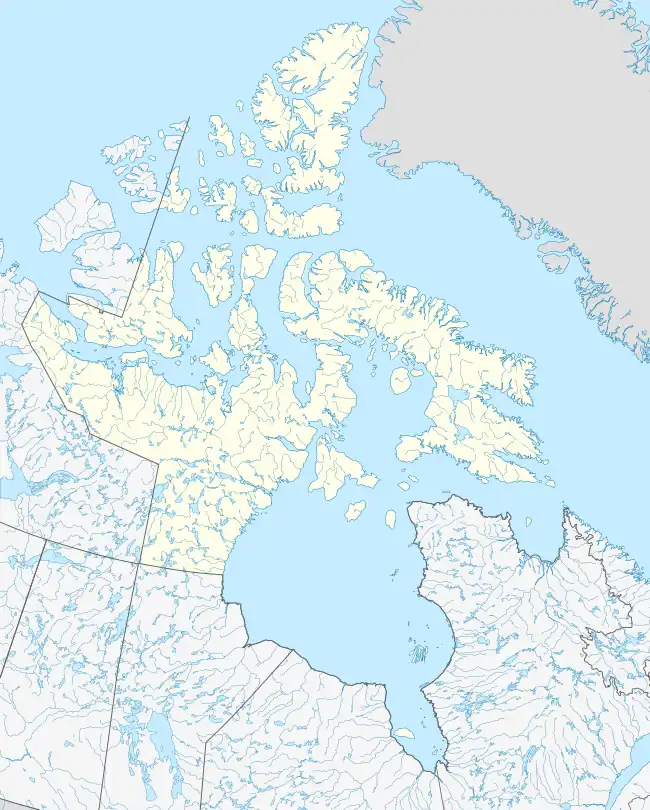Nuvuttiq
Cape Searle | |
|---|---|
 Nuvuttiq | |
| Coordinates: 67°13′49″N 062°27′37″W / 67.23028°N 62.46028°W | |
| Location | Qaqaluit Island, Nunavut |
| Offshore water bodies | Davis Strait |
| Native name | ᓄᕗᑦᑎᖅ (Inuktitut) |
| Area | |
| • Total | 2 km2 (0.77 sq mi) |
| Elevation | 450 m (1,480 ft) |
Nuvuttiq (ᓄᕗᑦᑎᖅ[1]) formerly Cape Searle[2] is an uninhabited headland located on Qaqaluit Island's northeastern tip, in the Qikiqtaaluk Region of Nunavut, Canada.
It was named by Arctic explorer John Ross on 17 September 1818 in honor of John Clark Searle, Esq.,[3] then Chairman of the Victualling board.
Geography
The habitat is characterized by coastal cliffs and rocky marine shores. It is 2 km2 (0.77 sq mi) in size, with an elevation rising up to 450 m (1,480 ft) above sea level.
Fauna
Cape Searle is home to the largest northern fulmar colony in Canada.
Conservation
It is a Canadian Important Bird Area (#NU003), an International Biological Program site and a Key Terrestrial Bird Habitat site.[4]
References
- ↑ Nuvuttiq
- ↑ Nuvuttiq (Formerly Cape Searle)
- ↑ Ross, John (1819). A voyage of discovery. Vol. 2 (Digitized December 13, 2005 ed.). London: Longman, Hurst, Rees, Orme, and Brown. p. 31. Retrieved May 2, 2009.
- ↑ "Cape Searle". bsc-eoc.org. Archived from the original on 2011-06-12. Retrieved 2009-04-23.
This article is issued from Wikipedia. The text is licensed under Creative Commons - Attribution - Sharealike. Additional terms may apply for the media files.